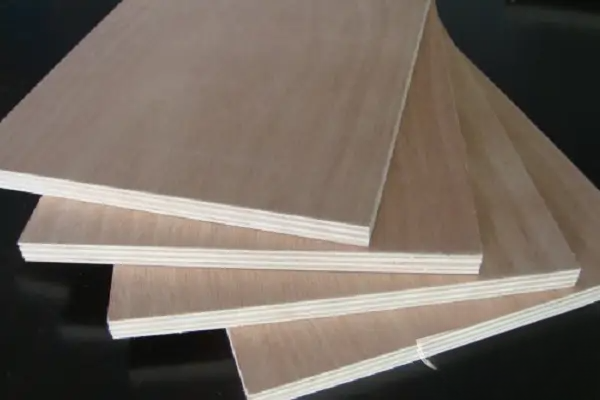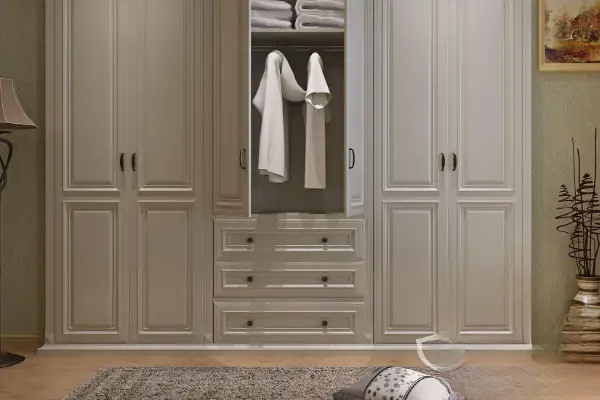Which type of wardrobe board has less formaldehyde? Which type of wardrobe board is the most environmentally friendly?
In fact, both ready-made wardrobes and custom-made wardrobes have the problem of formaldehyde. The formaldehyde content and environmental protection generally depend on the type of board used in the wardrobe. There are many types of wardrobe board materials on the market, and each material has different advantages and disadvantages. So which type of wardrobe board has less formaldehyde? Which type of wardrobe board is the most environmentally friendly? Let's take a look at the relevant introduction below.

Which type of board has less formaldehyde when making wardrobes?
1. Generally speaking, most custom wardrobes use particleboard, multi-layer solid wood board, melamine board and high-density board as cabinet materials. Among them, particleboard is cheap, but it is not environmentally friendly, has poor nail resistance, and is easy to break over time. Multi-layer solid wood structure is stable and not easy to deform. But the cost is high. High-density board has uniform density and is easy to reprocess, but it has poor waterproofness.
2. The wardrobe materials used in the on-site carpentry production are divided into two types: paint-free boards and non-paint-free boards. Paint-free boards (also called ecological boards) are the most commonly used boards for carpentry production. The base material used in the middle is solid wood and the surface layer is melamine veneer, which is highly environmentally friendly. Because melamine veneer is used, no paint is required and it is also more beautiful.
Which type of wardrobe board is the most environmentally friendly?
1. Wardrobe aluminum alloy plate
Using healthy and environmentally friendly aluminum alloy as the material, and using advanced production technology and processes to manufacture aluminum alloy wardrobes, the formaldehyde problem can be completely solved, and there is no need to worry about the hidden danger of excessive formaldehyde. However, the price of pure aluminum alloy wardrobes is not cheap, so although aluminum alloy wardrobes are becoming more and more popular, there are still few people who actually install them.
2. Wardrobe solid wood board
Solid wood boards are wood boards made of complete wood (logs). Wardrobes made of solid wood boards generally emit a unique aroma of natural wood. Its environmental performance can be imagined. Unfortunately, the cost of pure solid wood boards is very high and it is not affordable for ordinary well-off families.
3. Wardrobe density board
The raw materials of density board are mainly wood fiber or other plant fiber, which are then glued together. Merchants generally call density board medium density fiberboard (MDF) or fiberboard, which has a low formaldehyde content. Australian pine board and grass board, which have been popular in recent years, are both derivatives of density board.

4. Wardrobe particle board
Particle board is made of wood chips bonded with adhesives. Its glue content should be the highest among all the boards, so compared with the above boards, its formaldehyde content is relatively high. In fact, particle board is also called particle board. Many brand companies use solid wood particle board. Usually, the formaldehyde content of solid wood particle board that meets the E1 environmental protection standard is relatively low.
5. Wardrobe plywood
Plywood is actually what we often call solid wood multilayer board, which is mainly made of thin wood boards glued together. The number of layers is called plywood. Three-ply board, five-ply board and nine-ply board often mentioned by carpenters are actually plywood. The environmental performance depends on the content of glue. There is a new type of environmentally friendly board in plywood, which is called integrated board or tooth-jointed board. It is made of multiple wood strips spliced longitudinally and transversely using adhesives and cold pressing. Since white latex is used in the processing process, its environmental performance is trustworthy.
6. Wardrobe Blockboard
Strictly speaking, blockboard is actually a special type of plywood, because blockboard is based on plywood, with wooden strips or hollow boards as the core board, and then covered with two or more layers of plywood on both sides, and then pressed with glue. Since it uses less glue, it is more environmentally friendly.
7. Wardrobe Eco-board
Eco-board is a decorative board made of particleboard, moisture-proof board, medium-density fiberboard, plywood, blockboard or other hard fiberboard as the base material, and the surface is paper soaked in melamine resin adhesive, and finally hot-pressed. It was called "melamine board" in the early stage, but later it was renamed due to the dairy product pollution incident. It is generally called "paint-free board" in the industry. In fact, it also has a nice name "solid wood ecological board". Whether it is environmentally friendly or not must depend on the quality of the glue.
This is the end of the introduction about which type of board material contains less formaldehyde when making wardrobes . I hope the above introduction can help you choose the board material for your home wardrobe. Most owners use ecological board materials. Environmental protection indicators need to be checked when purchasing. After all, formaldehyde pollution cannot be ignored.